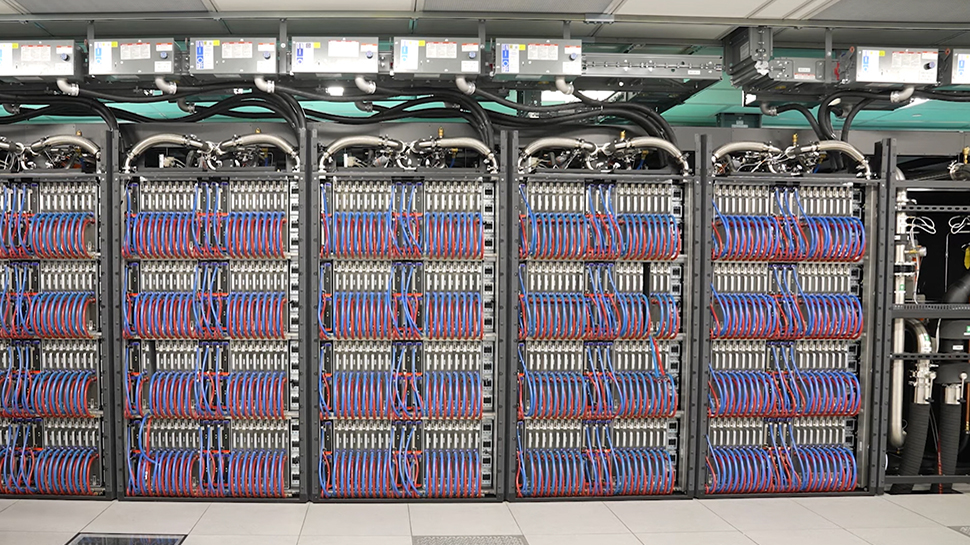
Intel, in partnership with Argonne National Laboratory and Hewlett Packard Enterprise (HPE), has claimed its Aurora supercomputer broke the exascale barrier at 1.012 exaflops, and additionally became the, “fastest AI system in the world dedicated to AI for open science” by achieving 10.6 AI exaflops.
Aurora lags a little way behind the Frontier system at Oak Ridge National Laboratory in Tennessee, which previously achieved 1.206 exaflops, but being the second supercomputer to break the exascale barrier is a massive achievement, especially when you take into account that Aurora is still being commissioned and is not yet fully complete.
HPC Wire ranked it number #2 in its top 500 list in November 2023. But that ranking was achieved with just “half of Aurora running the HPL benchmark”. In its most recent ranking, announced in May 2024, Aurora was still in second place (behind Frontier), but its new HPL score improved significantly over the previously recorded 585.34 petaflops.
Paving the road to tomorrow’s discoveries
Designed from the ground up for AI research, Aurora comprises 10,624 compute blades, 21,248 Intel Xeon CPU Max Series processors, and 63,744 Intel Data Center GPU Max Series units, all housed within 166 racks.
Ogi Brkic, Intel's vice president and general manager of Data Center AI Solutions, said “The Aurora supercomputer surpassing exascale will allow it to pave the road to tomorrow’s discoveries. From understanding climate patterns to unraveling the mysteries of the universe, supercomputers serve as a compass guiding us toward solving truly difficult scientific challenges that may improve humanity.”
Future plans for Aurora range from climate change modeling to fusion energy breakthroughs, atomistic simulations, and tackling memory-bound problems in designing future powerplants.
If you’re interested to see what Aurora looks like, Argonne National Laboratory provided an all-access tour which you can watch below.







